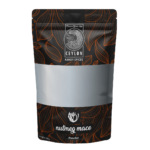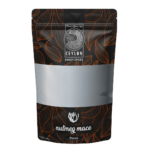Nutmeg’ mace

HISTORY
Nutmeg and its mace have been used for culinary and medicinal purposes for centuries. They were highly valued in ancient times and traded along the Spice Route between Asia and Europe. In the 16th century, the Dutch established a monopoly on nutmeg production in the Banda Islands, leading to conflicts between European powers. Today, nutmeg and mace are grown in various parts of the world, including Sri Lanka.
PRODUCTS AND USES
Nutmeg’s mace is commonly used as a spice in sweet and savory dishes, such as cakes,
custards, soups, and sauces. It is also used in traditional medicine to treat digestive issues,
nausea, and diarrhea. Mace is known for its delicate and floral flavor, with a slightly sweet and
pungent taste. It is also used as a natural food coloring agent and is commonly added to
cheese, butter, and other dairy products for its aromatic flavor and bright color.
MAJOR GROWING AREAS
Sri Lanka is one of the major producers of nutmeg’s mace, with the spice being grown in the
southern and central regions of the country, including the districts of Galle, Matara, and Kandy.
MEDICINAL AND CHEMICAL PROPERTIES
Nutmeg’s mace contains various beneficial compounds, including myristicin, elemicin, and eugenol, which have anti inflammatory, anti-bacterial, and antioxidant properties. These compounds make mace useful for treating digestive issues, reducing inflammation, and promoting overall health. In traditional medicine, mace is used to relieve pain, treat fever, and
promote relaxation.


